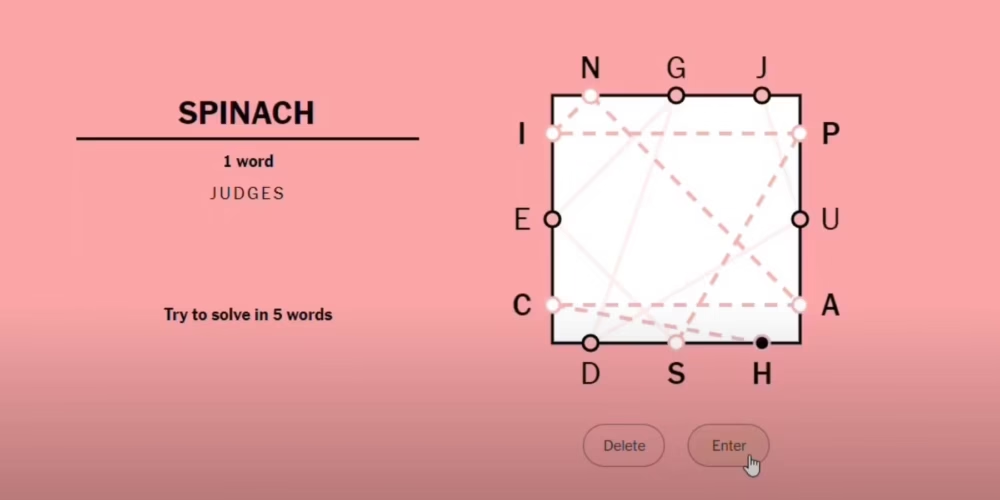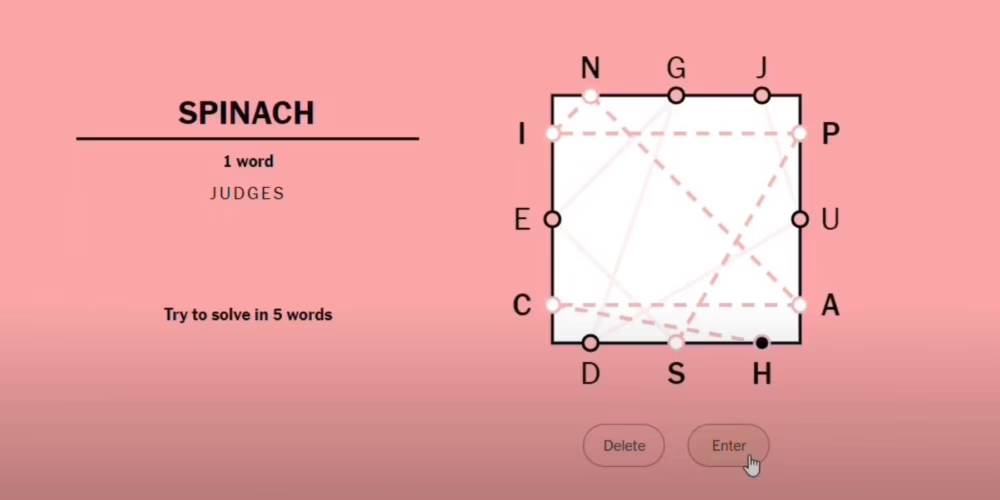The New York Times (NYT) has long been synonymous with quality journalism and thought-provoking content. Yet, one of its most engaging offerings is not an article but a word puzzle: Letter Boxed. Introduced in 2019 as part of the newspaper’s suite of word games, Letter Boxed has gained a loyal following among puzzle enthusiasts who revel in its blend of creativity, vocabulary, and strategy.
This article delves into the intricacies of Letter Boxed, exploring its origins, mechanics, appeal, and strategies for mastering the game. Whether you are a seasoned solver or a curious newcomer, Letter Boxed offers a delightful challenge that sharpens your wits while enriching your lexicon.
Origins and Context of Letter Boxed
Letter Boxed is part of the NYT’s Games section, which includes beloved puzzles such as the Crossword, Spelling Bee, and Sudoku. In recent years, the Times has expanded its puzzle offerings, recognizing the growing demand for digital games that challenge the intellect.
The creation of Letter Boxed reflects a broader trend in gaming culture: the resurgence of word-based puzzles. With a simple interface and minimalist design, Letter Boxed harks back to classic word games but incorporates modern elements to keep it fresh and engaging.
At its core, Letter Boxed is a testament to the enduring appeal of language-based puzzles. In an era dominated by fast-paced entertainment and short attention spans, games like Letter Boxed remind players of the joy found in thoughtful, deliberate problem-solving.

The Mechanics of Letter Boxed
The rules of Letter Boxed are refreshingly straightforward, yet they require a sharp mind and a broad vocabulary to master. The game presents players with a square or rectangular box divided into four sides. Each side contains three letters, for a total of 12 letters in the puzzle.
The objective is simple: create words by connecting the letters. However, there are two key constraints:
- Word Continuity: Each word must begin with the last letter of the previous word.
- Side Restriction: Consecutive letters in a word cannot come from the same side of the box.
Players aim to use all 12 letters while forming as few words as possible. The game tracks your progress, and the ultimate goal is to solve the puzzle in two or three words—although some puzzles require more.
The Appeal of Letter Boxed
What makes Letter Boxed so addictive? Its appeal lies in the delicate balance it strikes between simplicity and complexity.

- Cognitive Challenge: Letter Boxed engages multiple cognitive processes, including pattern recognition, strategic planning, and linguistic knowledge. Players must think several steps ahead, visualizing how words fit together while adhering to the rules.
- Creative Expression: Unlike many puzzles that have a single solution, Letter Boxed allows for creativity. Players can experiment with different word combinations, finding unique paths to the solution.
- Flexibility: The game’s design accommodates players of varying skill levels. Beginners can focus on forming longer word chains, while advanced solvers strive for the coveted two-word solution.
- Universal Appeal: Letter Boxed transcends age and background, attracting everyone from students to retirees. Its emphasis on vocabulary makes it particularly appealing to language enthusiasts and lifelong learners.
Strategies for Mastering Letter Boxed
Success in Letter Boxed requires more than just a good vocabulary. Here are some strategies to enhance your gameplay:
- Analyze the Letter Distribution: Begin by examining the box. Look for letters that are less versatile (such as Q, X, or Z) and prioritize using them early in your solution.
- Focus on High-Frequency Letter Pairs: Common letter combinations like “TH,” “SH,” or “CH” can help you identify potential starting points and word transitions.
- Think Beyond Simple Words: While short words are tempting, they often limit your options later. Aim for longer words that use multiple letters and sides of the box.
- Leverage Your Vocabulary: Expand your lexicon by reading widely and paying attention to unusual words. Familiarity with lesser-known terms can be a game-changer.
- Experiment and Iterate: Don’t hesitate to try different word combinations. Sometimes, an unconventional approach leads to the perfect solution.
- Practice Patience: Letter Boxed is a game of trial and error. Embrace the process, and don’t be discouraged by initial failures.
Letter Boxed in the Context of Digital Gaming
The success of Letter Boxed underscores a broader shift in gaming culture. As digital platforms proliferate, word puzzles have carved out a niche market among players seeking intellectually stimulating entertainment.
Unlike action-packed video games or casual mobile apps, Letter Boxed prioritizes depth over immediacy. It encourages players to slow down, think carefully, and savor the experience. This aligns with a growing cultural movement that values mindfulness and intentional living.
Moreover, Letter Boxed exemplifies the potential of digital media to enhance traditional games. Its user-friendly interface, seamless integration with the NYT app, and social sharing features make it an ideal puzzle for the digital age.
Community and Competition
One of the joys of Letter Boxed is its vibrant community of solvers. Players often share their solutions on social media, comparing strategies and marveling at the ingenuity of others.
The competitive aspect of Letter Boxed adds another layer of excitement. While the game itself does not have a scoring system, players derive satisfaction from achieving a two-word solution or discovering particularly elegant word chains.
Online forums and discussion groups have also sprung up around Letter Boxed, where enthusiasts exchange tips, analyze challenging puzzles, and celebrate their shared love of words.
The Educational Value of Letter Boxed
Beyond entertainment, Letter Boxed has significant educational benefits. It sharpens linguistic skills, enhances problem-solving abilities, and fosters a love of language.
Educators have begun incorporating Letter Boxed into their teaching methods, using it to expand students’ vocabularies and promote critical thinking. The game’s adaptable format makes it suitable for various age groups, from middle schoolers to adult learners.
Future Prospects for Letter Boxed
As Letter Boxed continues to grow in popularity, the NYT may introduce new features to enhance the player experience. Potential updates could include:
- Customizable Puzzles: Allowing players to create their own Letter Boxed challenges to share with friends.
- Timed Modes: Introducing a time-based element for players seeking an added layer of difficulty.
- Expanded Letter Sets: Occasionally increasing the number of letters in the box to vary the challenge.
Whatever the future holds, Letter Boxed is likely to remain a staple of the NYT’s Games section, captivating word enthusiasts for years to come.
Conclusion
NYT’s Letter Boxed is more than just a game; it is a celebration of language and the human capacity for ingenuity. Its blend of creativity, strategy, and intellectual challenge has cemented its status as a modern classic in the world of word puzzles.
For those who relish the thrill of finding the perfect word, Letter Boxed offers endless opportunities to explore, experiment, and excel. Whether you play for fun, education, or competition, this delightful puzzle is sure to leave you inspired and entertained.
So, the next time you find yourself seeking a mental workout or a moment of linguistic joy, give Letter Boxed a try. You might just discover your new favorite pastime.



